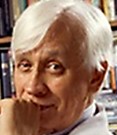
Nansen Neuroscience Lecture 2016
When: Monday 10th October 2016 at 11:30 - 14:00
Where: The Norwegian Academy of Science and Letters - DNVA, Drammensveien 78, 0271 Oslo
Admission: Open to public, no charge
11:30 - 12:00: Coffee and refreshments, mingling
Organizers: Linda H Bergersen and Jon Storm-Mathisen in cooperation with the University of Oslo, the Nansen Neuroscience Network (NNN), and the Norwegian Academy of Science and Letters (DNVA).
The Nansen Neuroscience Lectures (NNL) are organized in conjunction with Fridtjof Nansen's birthday to commemorate his fundamental contribution to neuroscience.
The NNL are given by speakers selected from the top tier of neuroscience research.
12:00: Opening by Øivind Andersen, Secretary General of The Norwegian Academy of Science and Letters
12:03: Introduction by Linda H Bergersen, University of Oslo
12:06: Lecture by Anthony N van den Pol, Yale University
12:46: Discussion and questions from the audience, moderator Jon Storm-Mathisen
13:03: Introduction by Linda H Bergersen, University of Oslo
13:06:Lecture by Rodolfo R Llinás, New York University
13:46: Discussion and questions from the audience, moderator Jon Storm-Mathisen
Anthony N van den Pol
Virus in the brain - generating neurological dysfunction or destroying tumors:
Many RNA and DNA viruses can enter the brain. Some exert minimal damage, whereas others can generate subtle or dramatic neuronal dysfunction. The lecture will first examine some neurological problems that viruses can generate within the brain, either directly or indirectly, including Zika virus and cytomegalovirus that are particularly problematic in the developing brain. The talk will then focus on the utilization of chimeric viruses that contain genes from otherwise dangerous viruses including Ebola or Lassa fever virus, coupled with genes from vesicular stomatitis virus. These chimeric viruses appear safe and can target and selectively destroy brain tumors, including glioma, melanoma, and other cancers that may metastasize into the brain, thereby prolonging the lives of individuals with brain cancer.
Dr van den Pol graduated from Yale University and did postdoctoral work at Oxford, Semmelweis, and Stanford Universities in the areas of neuropharmacology, neuroanatomy, and neurophysiology. He has two overlapping research interests. One focus is on regulatory mechanisms of the hypothalamus. The other is on viruses as pathogens and experimental and therapeutic tools in the brain.
Affiliation: Anthony N van den Pol, PhD, Prof of Neurosurgery and of Psychiatry, Yale Univ Sch Med, 333 Cedar St, New Haven, CT, USA; Homepage
Rodolfo R Llinás
Content and Context in Cognition: Intrinsic Neuronal Oscillation and Brain Function:
The talk will address the basic hypothesis that large scale temporal coincidence activity, based on intrinsic neuronal oscillation properties, generates the functional states that underlie cognition.
Additional talk by Dr Llinás: Art, the Other Face of the Brain
IMB Distinguished Seminar October 11, 2016, at 12:00
The visit by Dr Llinás is sponsored by the Embassy of Colombia in Norway.
Dr Llinás graduated and received his MD at the Pontifical Xavierian University in Bogotá, Colombia, and did his PhD with Sir John C Eccles at the Australian National University. He has made a wide range of contributions ranging from basic properties of nerve cells to brain network function, such as cerebellar control of movements and thalamo-cortical interaction in cognition.
Affiliation: Rodolfo R Llinás, PhD, MD, T and S Murphy Professor of Neuroscience, Dept of Neuroscience and Physiology, New York University School of Medicine, New York, NY, USA; Homepage
